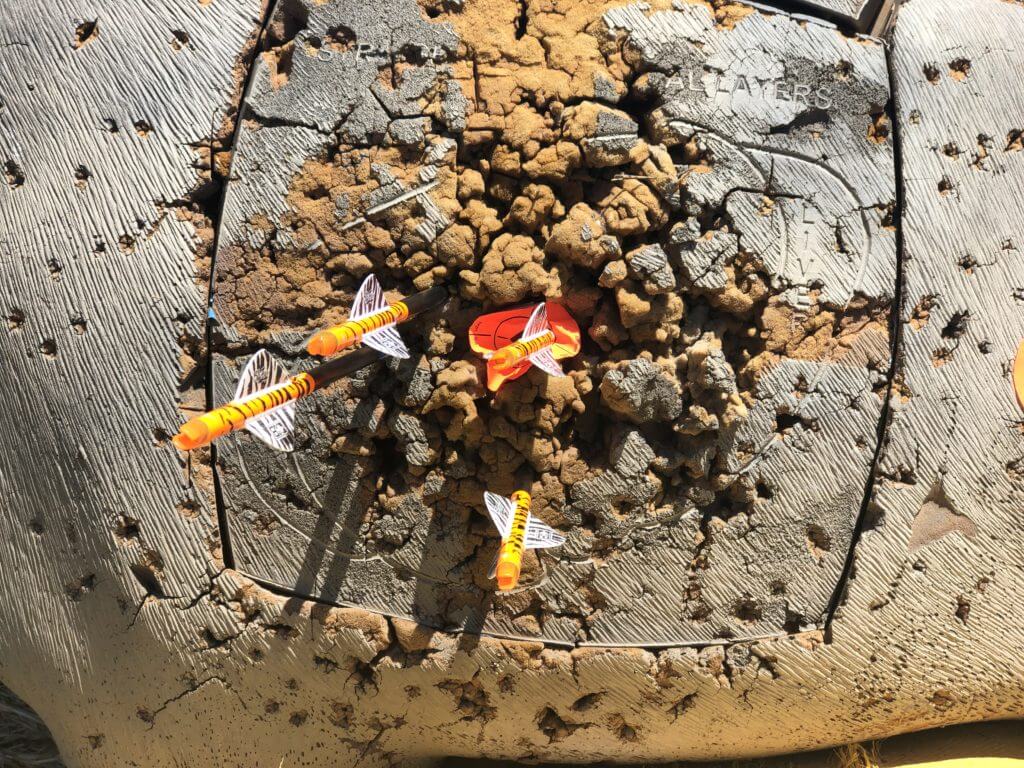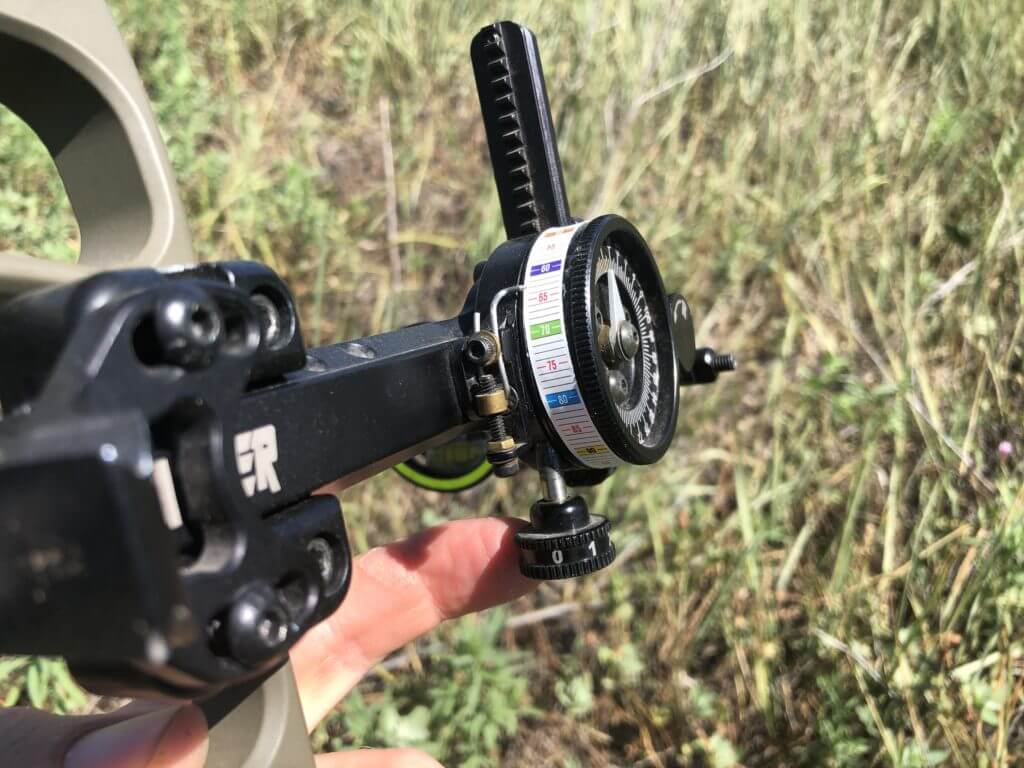
There’s a reason top 3-D and target shooters fix a single-pin sight to their risers, and that reason is accuracy. With only a single vertical aiming point rising up from the bottom of the sight’s housing, clutter is reduced, and a clear sight picture is gained.
Both target-panic-stricken bowhunters and those looking to take their in-the-field accuracy to the next level are starting to take advantage of the single-pin system. Other would-be single-pin goers have been derailed by myths. If you’ve been derailed, don’t fret, we’re going to debunk those myths and put you on a path to better accuracy and better bowhunting.
Myth #1 – You won’t be able to make a shot on an animal that bounds back a few yards.
My go-to single-pin is Spot Hogg’s Hogg Father Double-Pin. Don’t get confused. The sight still boasts a single vertical post, but the post is fitted with a pair of fiber-optic aiming points. When sighted-in at 20 yards, my second dot hits dead-on at 36 yards. Splitting those pins, just like I would on a multi-pin sight, puts my arrow in the kill-zone at 30 yards. With this two-pin system on a single vertical post, I have aiming points from 20 to 36 yards, and I get this without multiple pins coming in from the side of the housing. My view of the target is crystal clear and I can execute precise shots.

The more you shoot your single-pin system, the more comfortable you will get with it. You will find yourself shooting more because you’ll be putting more arrows in the 10-ring. It’s more fun to shoot when you’re pounding your mark. As you learn your sight, you’ll learn a number of other aiming tricks. For instance, I often practice using my sight’s bubble as an aiming reference. Currently, holding the top of my bubble on a target puts my arrow in the kill zone at 47 yards, which gives me yet another aiming point.

Most bow shots on big game are inside of 50 yards. In fact, my 15-year average shot distance on big-game animals is 34 yards. This past season I had a Nebraska whitetail dead-to-rights at 24 yards. When I drew, something spooked him and he ran back a few yards. He stopped next to a bush I had ranged earlier in the morning. The range was 30 yards. I split my pins and smoked him through both lungs without ever letting down and adjusting my sight pin. If you know your sight and practice with it often, making shots between 20 and 45 yards without needing to make a sight adjustment shouldn’t be an issue.
Tip: If you want to add another aiming point to your single-pin sight, add a dot of fluorescent model paint (fluorescent orange works great) to your sight’s single vertical post. A silver Sharpie also works well.

Myth #2 – What if I have my sight dialed and an animal wanders closer?
A couple of years back, I had a pronghorn coming to a tank. Something had him on alert and I was certain I was going to have to take a 42-yard shot. I dialed my sight to 42 yards and drew. When I did, the buck started marching right toward the tank. Being I was in a blind, I had all the time in the world to let-down and re-dial, but practice told me that if I held low on the buck’s heart, I would smoke him through both lungs. Knowing I wouldn’t have the luxury of letting down in a few weeks while chasing elk, I made the decision to simply trust my practice. The shot was perfect, and the buck expired quickly. Trust your practice and know where to hold if an animal comes close. It’s that simple.
Myth #3 – I won’t have time to dial my sight.
Having an accurate sight tape that allows one to dial their sight to the exact range of a given target is another reason competition shooters prefer a single-pin sight. I love this feature for bowhunting as well. We owe it to the animals we hunt to be as accurate as possible, and when shooting at distances beyond 50 yards, I believe dial-to-the-yard capability is a must.
When shooting at an animal, especially a distant animal, you often have much more time than you think. If you’ve done your job, the animal shouldn’t know you’re in the area, and if it’s on alert, you probably shouldn’t be taking the shot anyway. Get an accurate range, dial your sight, breathe and execute a good shot.

Tip: If you’re shooting a quality single-pin sight, you should be able to leave your sight adjustment wheel unlocked. This will save you time during the moment of truth. Before you do this in a hunting situation, practice with your wheel unlocked. Crawl and creep around the woods and make sure the wheel won’t move on its own. If it does, you may simply need to tighten a set screw.

You’re ready! Do your research, pick a quality single-pin sight and start practicing. I think you’ll find your accuracy will soar to new levels as will your in-the-field confidence.